Report
Group: 2
Section: 9
Wojciech Bieniek
Patryk Piwowarczyk
Aleksandra Szpiech
Ex. 3
Tutor name: Damian Grzechca
fIN=186Hz
Tresp=1.04ms
Measurement of oscillation period
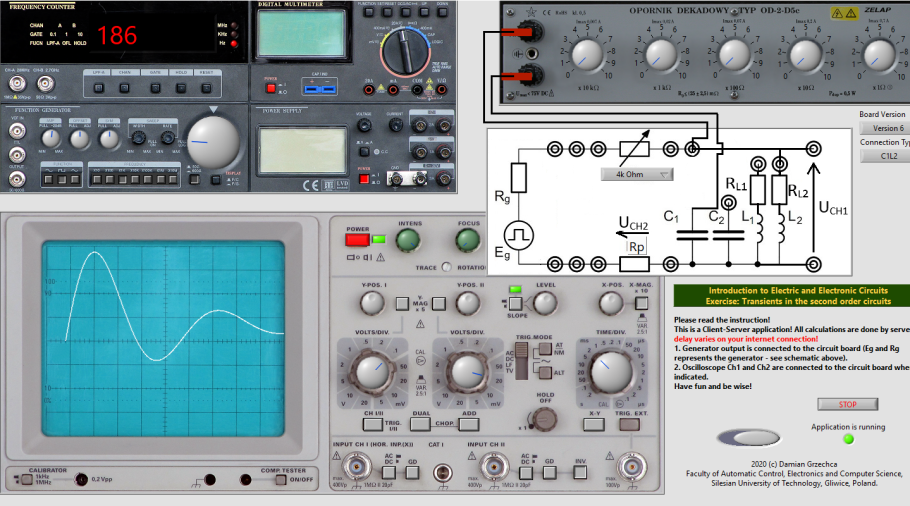
Critical response Rcrit=150Ω
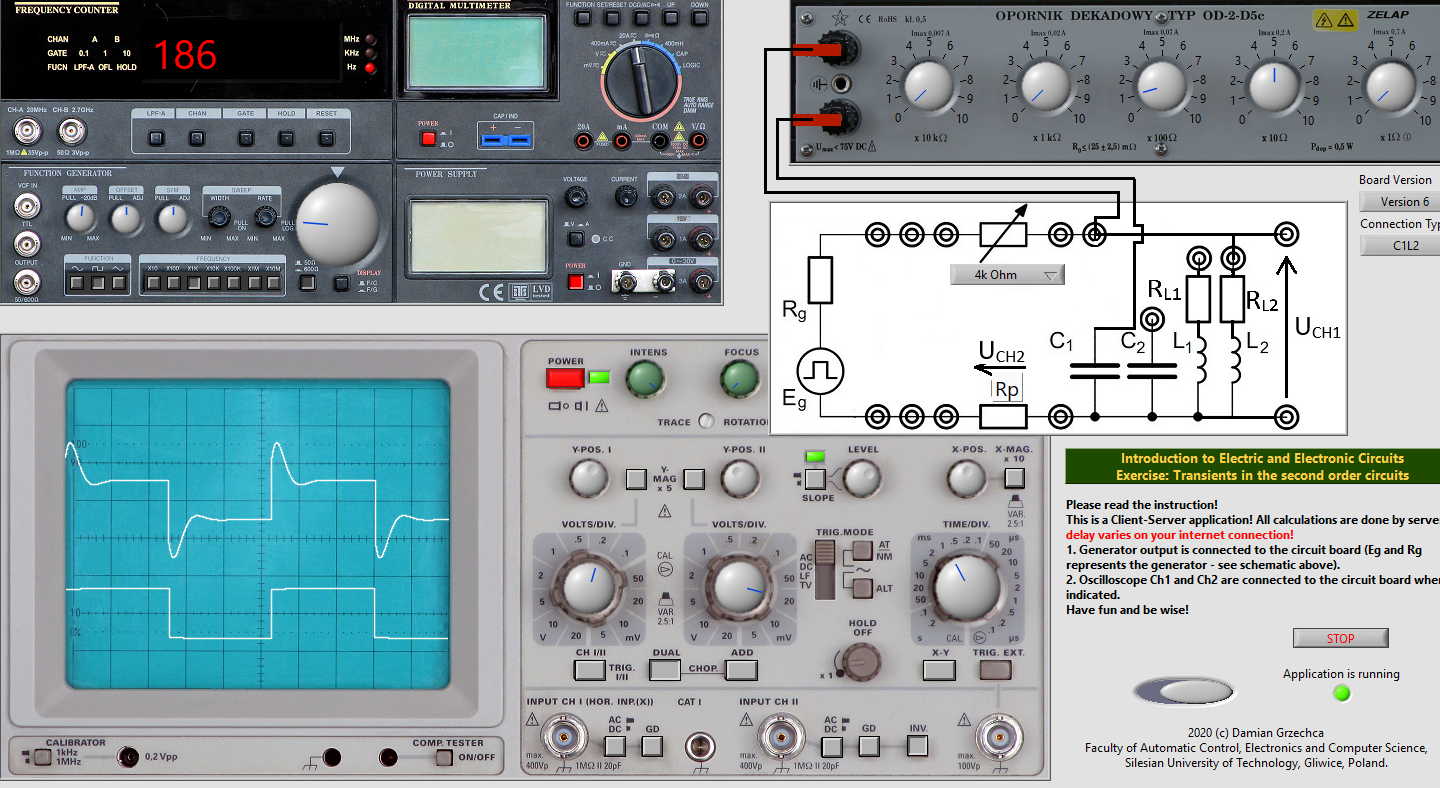
Observed voltage characteristic
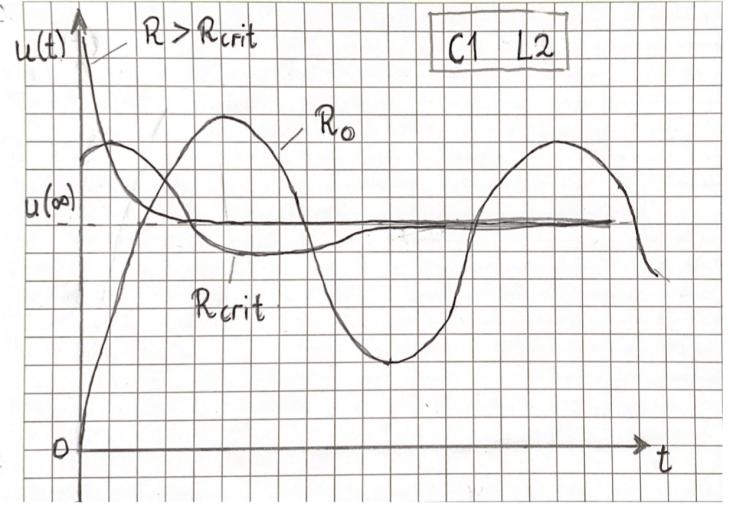
Observed currnet characteristic
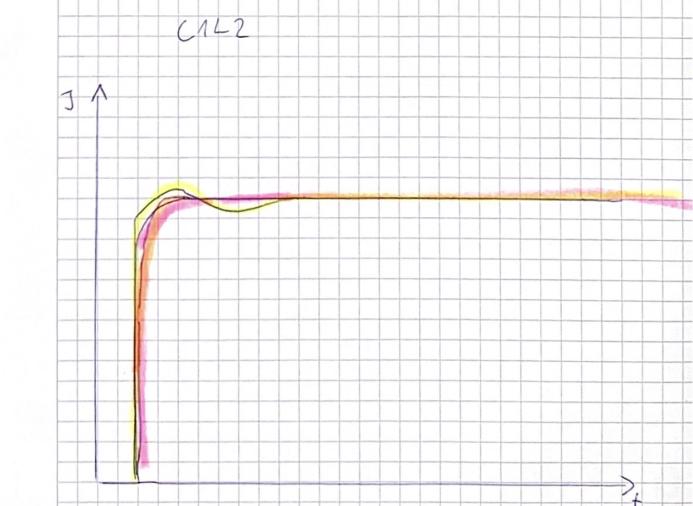
fIN=186Hz
Tresp=0.46ms
Measurement of oscillation period
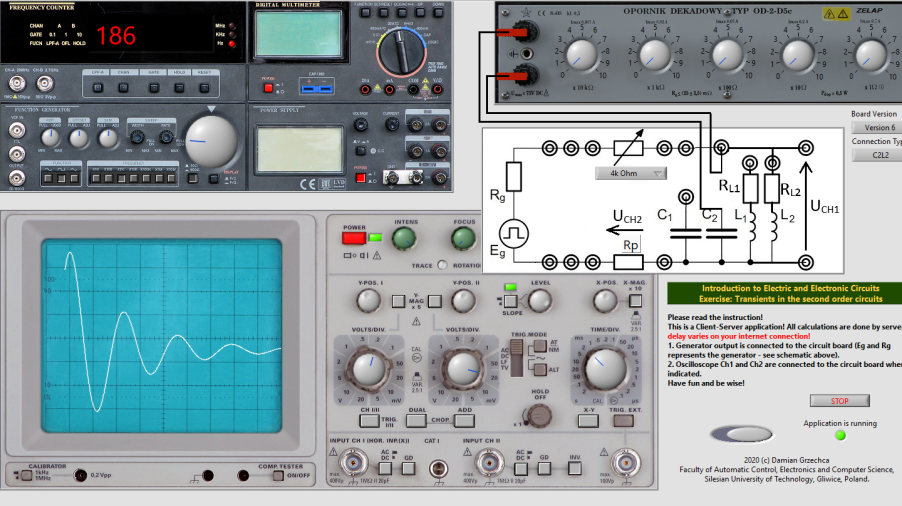
Critical response Rcrit=470Ω
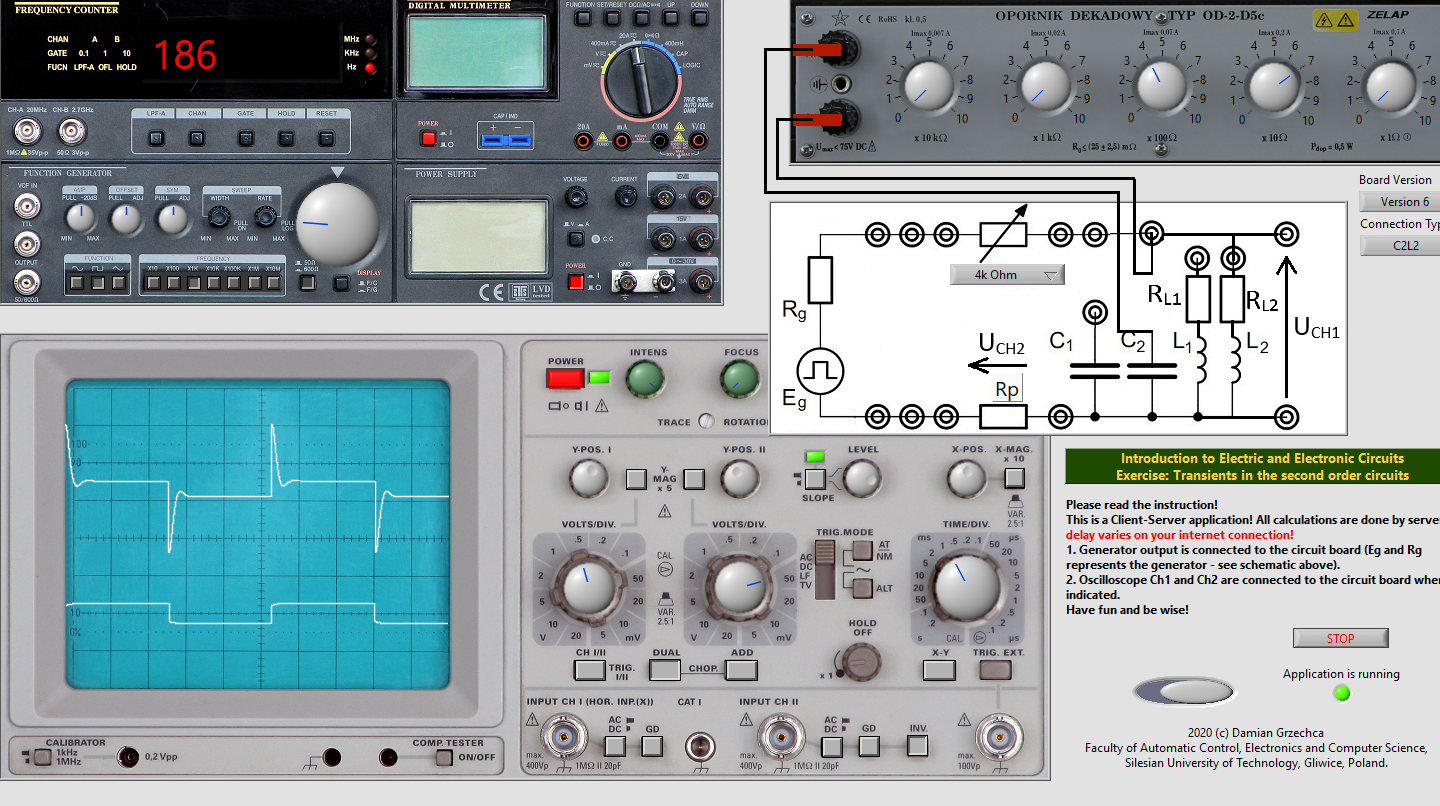
Observed voltage characteristic
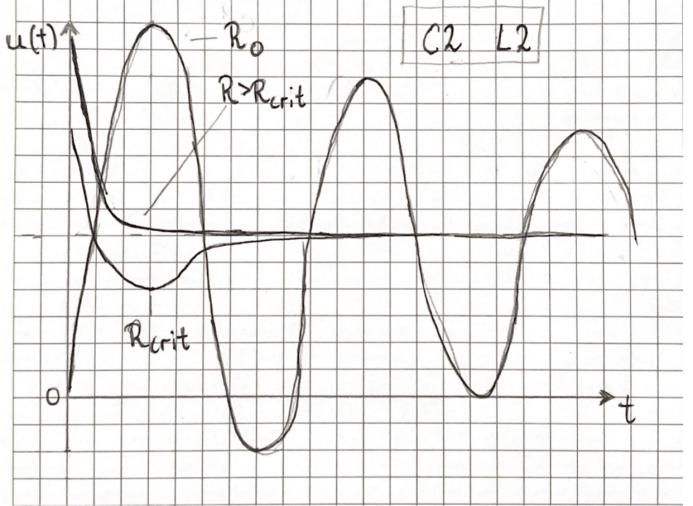
Observed currnet characteristic
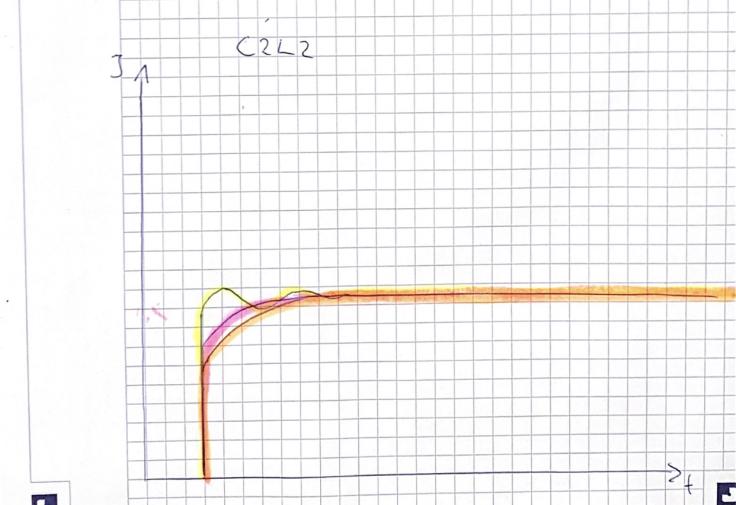
fIN=186Hz
Tresp=1.16ms
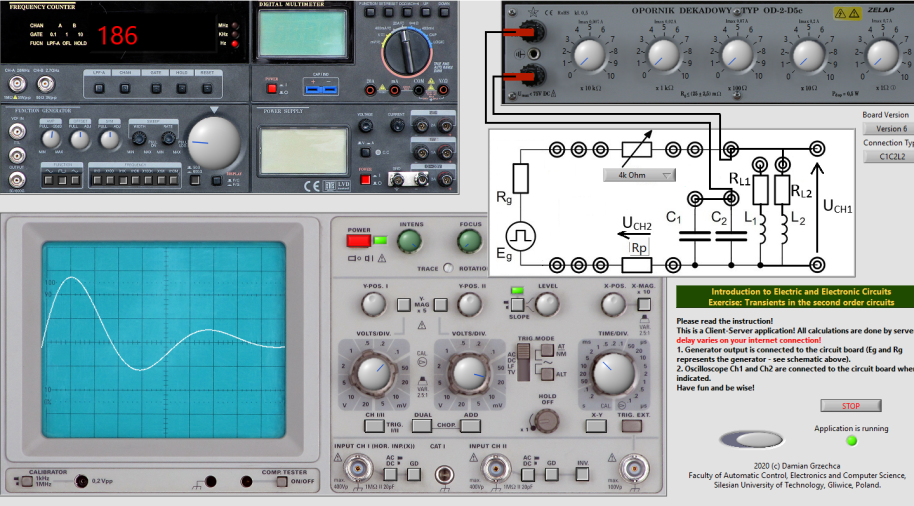
Critical response Rcrit=130Ω
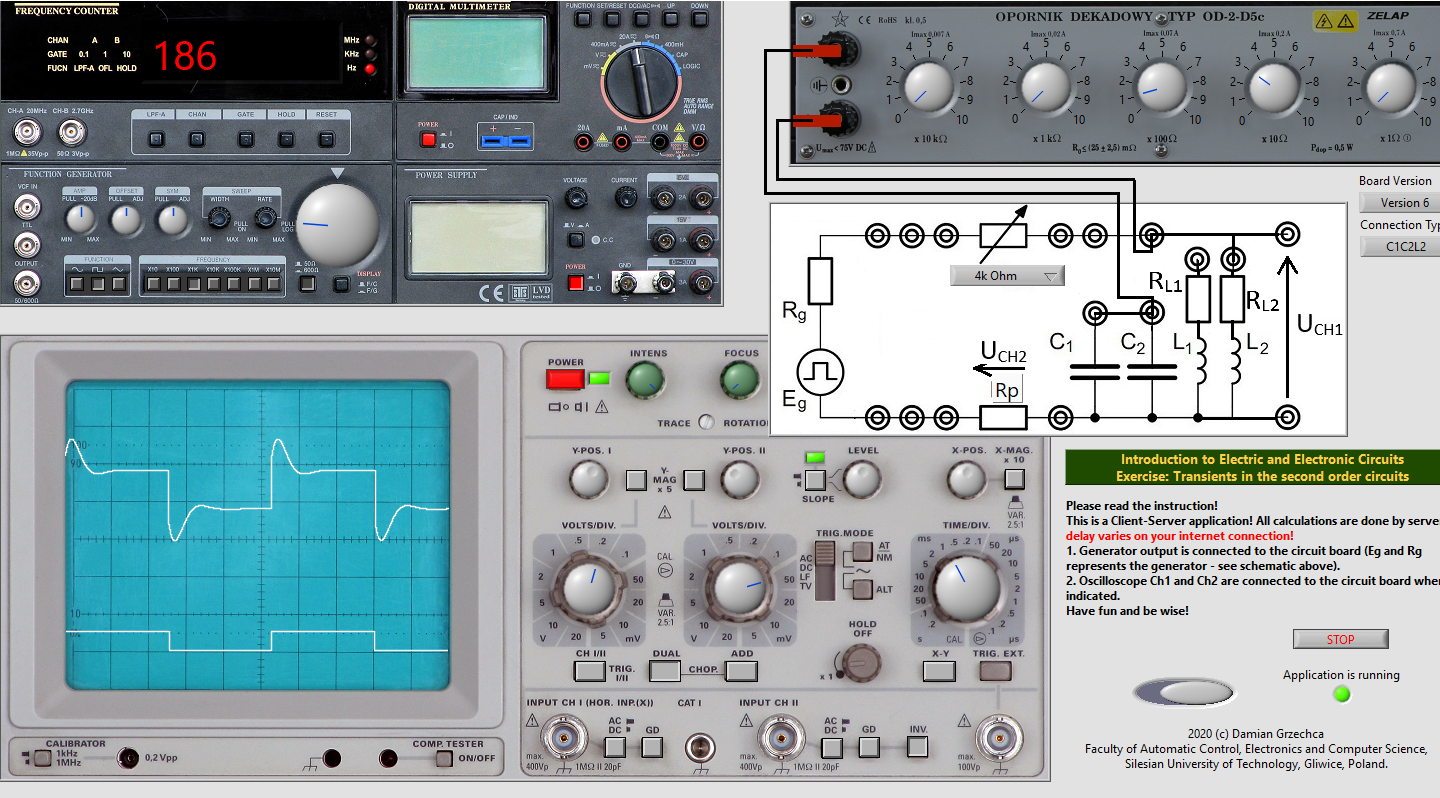
Observed voltage characteristic
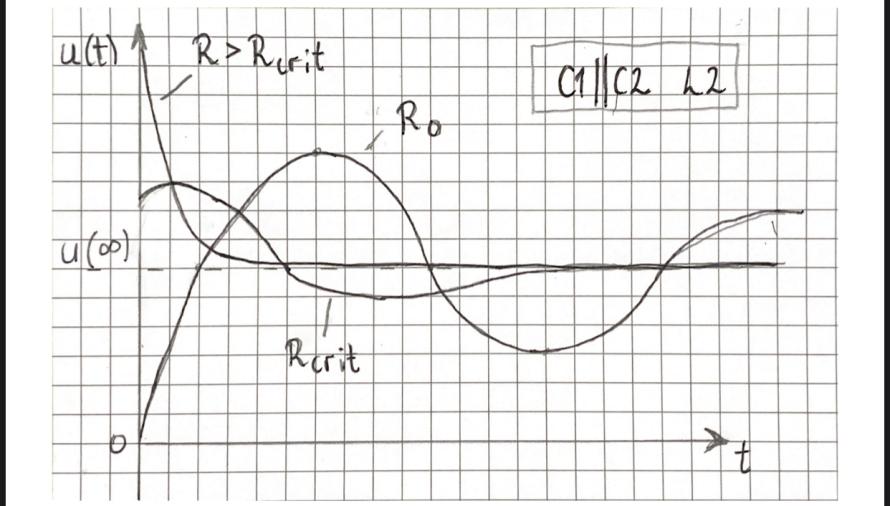
Observed currnet characteristic
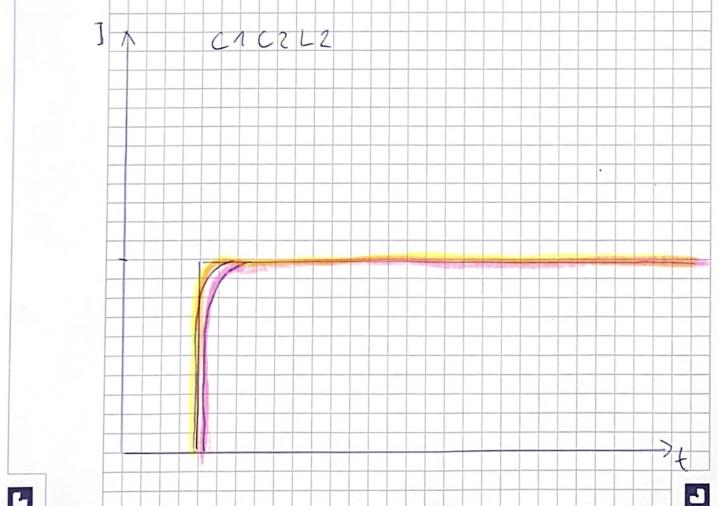
fIN=186Hz
Tresp=0.9ms

Critical response Rcrit=980Ω

Observed voltage characteristic
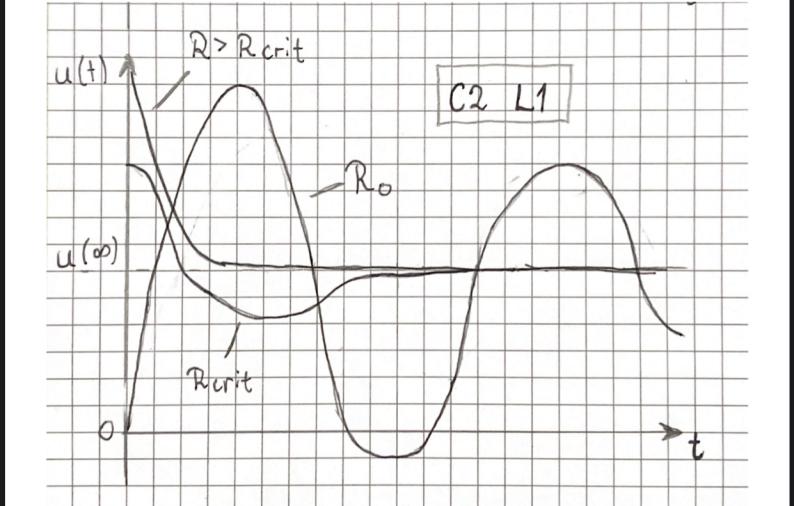
Observed currnet characteristic
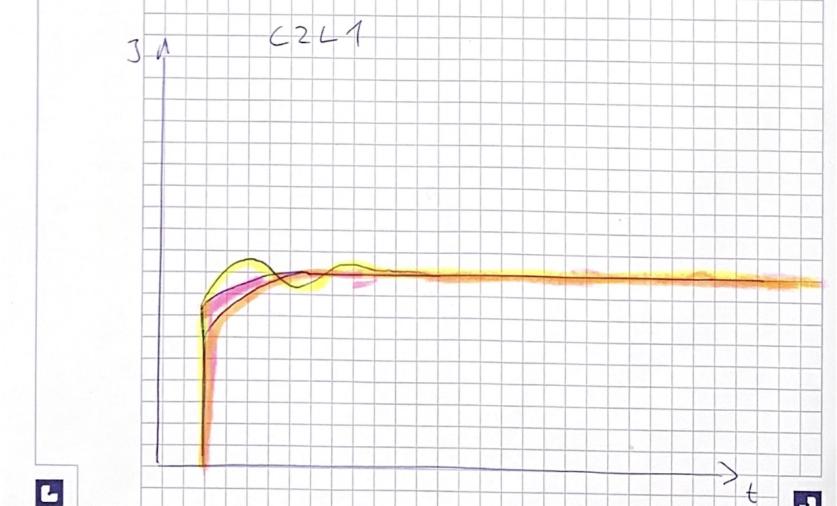
C1=749nF
C2=149nF
C1∥C2=898nF
L1=130mH
L2=34mH
RL1=200Ω
RL2=90Ω
Rp=12Ω
Rd=4kΩ
UA=5.163V
| Configuration |
C1 L2 |
C2 L2 |
C1C2 L2 |
C2 L1 |
| x |
Exp. |
Calc. |
Exp. |
Calc. |
Exp. |
Calc. |
Exp. |
Calc. |
| Time period of osc. R0 |
1.04ms |
- |
0.46ms |
- |
1.16ms |
- |
0.9ms |
- |
| Freq. of osc. R0 |
961.5Hz |
997.3Hz |
2173Hz |
2236Hz |
862.1Hz |
910.8Hz |
1111Hz |
1143Hz |
| δ |
- |
−2.09 |
- |
−0.4382 |
- |
−2.647 |
- |
−1.663 |
| Rcrit |
150Ω |
339.337Ω |
470Ω |
897.346Ω |
130Ω |
391.826Ω |
980Ω |
192.966Ω |
| i(0+) for R0 |
2mA |
1.084mA |
0.833mA |
1.084mA |
2.5mA |
1.084mA |
2.5mA |
1.084mA |
| u(0+) for R0 |
0V |
0V |
0V |
0V |
0V |
0V |
0V |
0V |
| i(∞) for R0 |
2mA |
1.063mA |
1.66mA |
1.063mA |
2.5mA |
1.063mA |
2.5mA |
1.039mA |
| u(∞) for R0 |
200mV |
95.7mV |
200mV |
95.7mV |
200mV |
95.7mV |
400mV |
207.8mV |
| i(0+) for Rcrit |
1mA |
1.06mA |
2.083mA |
1.031mA |
2.5mA |
1.062mA |
1.66mA |
0.9844mA |
| u(0+) for Rcrit |
800mV |
112.9mV |
1000mV |
289.8mV |
700mV |
103.3mV |
1800mV |
459.8mV |
| i(∞) for Rcrit |
1.833mA |
1.063mA |
1.833mA |
1.063mA |
1.833mA |
1.063mA |
2.083mA |
1.039mA |
| u(∞) for Rcrit |
200mV |
95.7mV |
200mV |
95.7mV |
200mV |
95.7mV |
200mV |
207.8mV |
If capacitance is growing, then the frequency is getting lower and so is Rcrit.
If inductance is growing, then the frequency is dropping and so is Rcrit.
Great difference between our observed and calculated values comes from low precision of setting the amplitude as well as invalid initial description of ‘critical damping’. From the laboratory instruction we gathered that it occurs when voltage passes the u(∞) line only once, however from calculations it appears that said line shouldn’t be crossed when searching for Rcrit.















